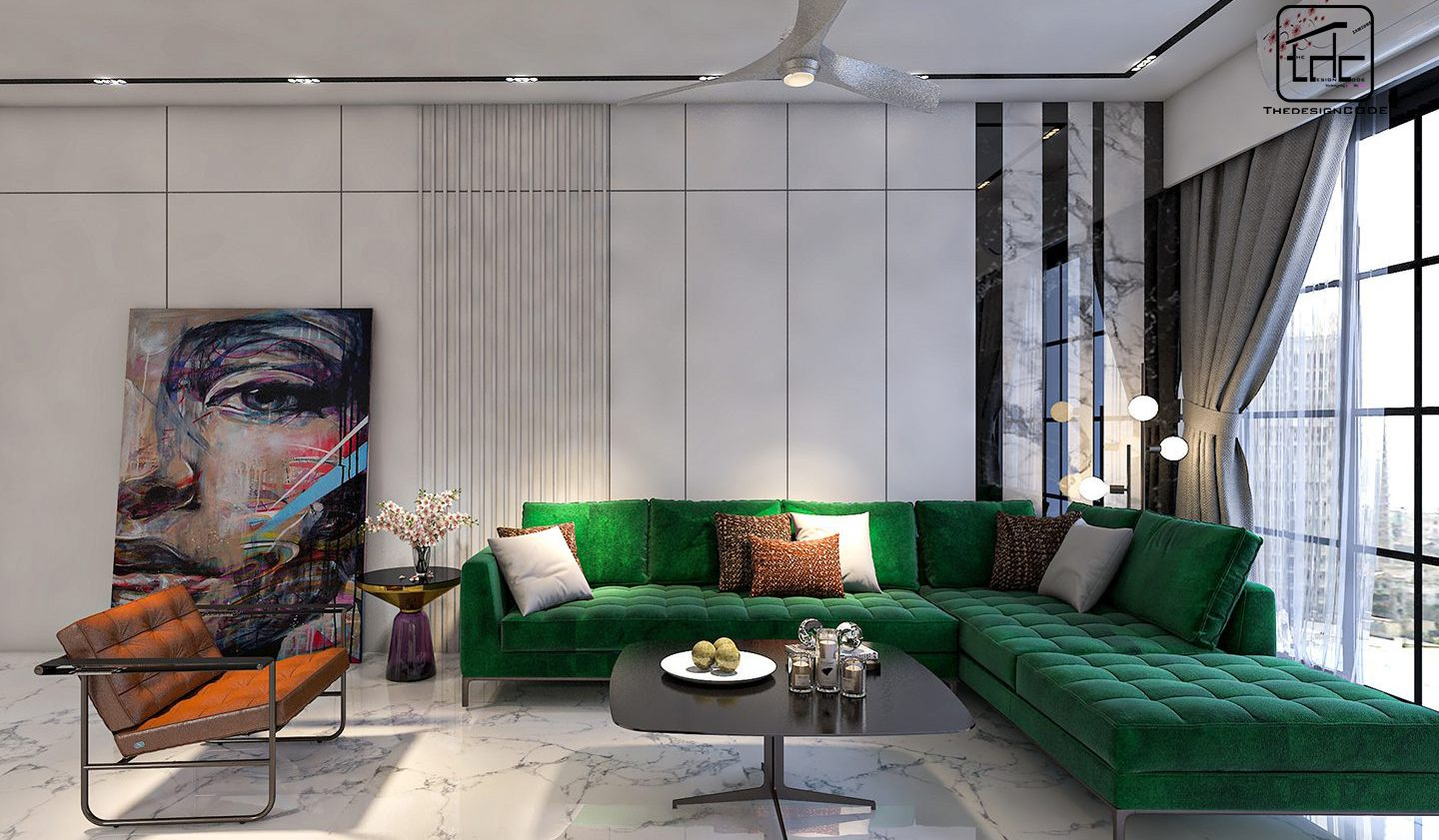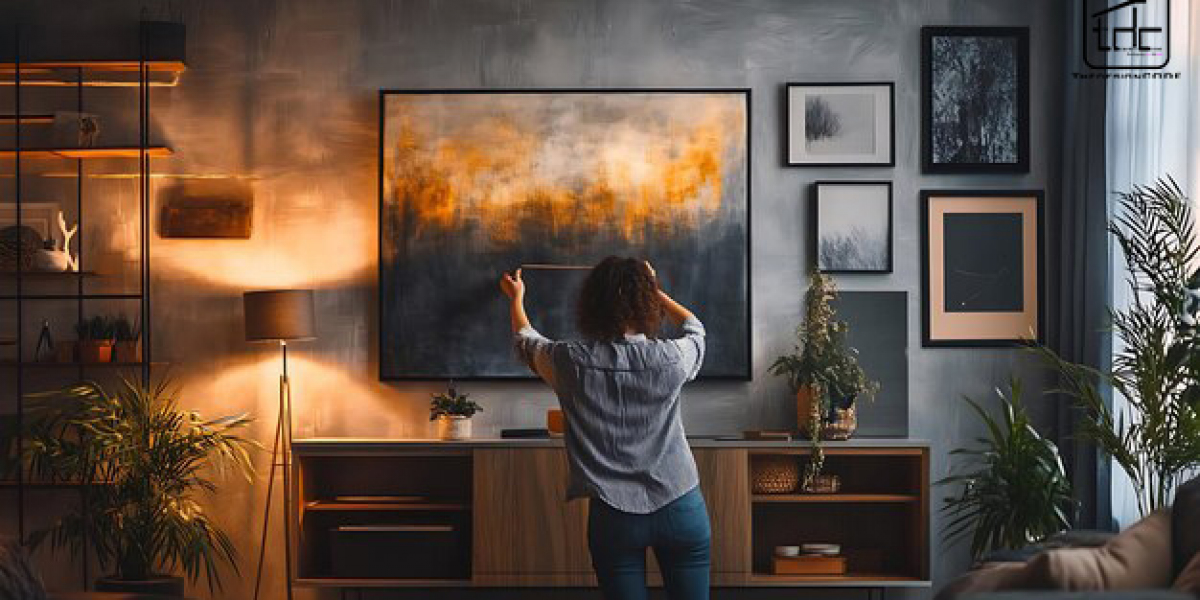Art has the wonderful ability to transform a space, bringing personality, warmth, and beauty to any setting. At The Design Code, we believe that adding artwork into your interior design is critical for creating a room that is truly your own. As a luxury interior designer, we understand how art can elevate the look of your house. In this article, we'll walk you through the process of choosing and organizing artwork to complement your interior style.

Define your style
Before you begin selecting artwork, you need to determine your design aesthetic. Are you attracted to modern minimalism, traditional elegance, or eclectic charm? Understanding your unique style will help you choose things that appeal to you and match your existing decor. For example, a strong, abstract piece may be appropriate for a contemporary setting, whilst a classic landscape may be appropriate for a traditional room. Take the time to experiment with numerous styles and discover what actually appeals to you.
Select a focal point
Once you've determined your style, choose a focal point for your area. A focal point is a prominent piece of art that grabs the eye and establishes the tone for your room. This may be a massive painting, a striking sculpture, or a one-of-a-kind wall installation. The idea is to select something that draws attention and serves as a discussion starter. Position your focal point strategically, such as above a fireplace or on a feature wall, to ensure it shines out.
Consider size and scale
When selecting artwork, size is important. The dimensions of your artwork should correspond to the size of your walls and furniture. Large objects may have a dramatic effect in large spaces, making them feel more inviting. In contrast, smaller paintings can be grouped together to create a gallery effect on smaller walls. Experiment with different sizes and configurations to determine what feels best for your space. Remember that your design should be balanced and harmonious.
Colour Harmony
Color is important in home design, and the same is true when choosing artwork. Choose elements that complement your present color pallet. Look for artworks that feature colors from your furniture, textiles, and decor. This results in a coherent appearance that links the room together. If you want to add a flash of color, choose an item that contrasts with your current palette while complementing the overall design.
Experiment with placement
Don't be scared to try different positions for your artwork. While it is traditional to hang art at eye level, there are other inventive methods to present it. Consider unusual locations, such as atop furniture, on shelves, or even resting against the wall. You might also try combining smaller pieces to create a dynamic show. The goal is to have fun and create an arrangement that works for your space.
Mix and Match Styles
One of the most exciting features of incorporating art into your interior design is the possibility to mix and match various styles. Combining traditional and contemporary items can result in a dynamic and fascinating appearance. For example, combining a classic portrait with a modern abstract painting might provide depth and interest to your room. Don't be scared to try new styles to express your personality and preferences.
Use Frames and Matting
The appropriate framing can improve the artwork and integrate it into the overall design. Consider utilizing frames that match the style of the artwork and the decor in your home. For example, sleek, basic frames complement modern art, but ornate frames can enhance classic pieces. Matting can also provide a polished appearance and visual appeal. Experiment with several framing options to determine which works best for your space.
Pay attention to lighting
Lighting has a significant impact on how artwork is seen. Consider the lighting in your space—natural light, ambient light, and accent lighting can all influence the appearance of your artwork. If you have a favorite piece, consider using spotlights or wall sconces to accentuate it. Avoid direct sunlight, since it can fade colors over time. Good lighting will guarantee that your work is beautifully presented and adds to the atmosphere of your room.
Tell a story
Art is an excellent method to tell a narrative or convey a message in the house. Consider items having personal meaning or that relate to your experiences. This can be family photos, vacation souvenirs, or artwork that reflects your hobbies and passions. By expressing a story via your art, you may create a more intimate and meaningful environment that feels like home.
Rotate artwork seasonally
Consider switching your artwork seasonally to maintain a fresh look throughout the year. This can help your room feel fresh and vibrant. For example, you could showcase bright, lively pieces in the spring and summer, but more quiet, cozy colors in the autumn and winter. This not only offers variety to your decor, but also lets you experience different works of art throughout time.

Conclusion:
By carefully selecting and organizing artwork, you may substantially improve your interior design and create a room that feels comfortable. Art provides depth, character, and a personal touch that is crucial for every decor.
If you're feeling overwhelmed or unsure where to begin, don't hesitate to contact us at The Design Code. As the best interior designer in Mumbai, our team of specialists is ready to offer advice and inspiration for adding art into your house. Let us assist you in transforming your area into a beautiful, curated environment that reflects your individual taste!









